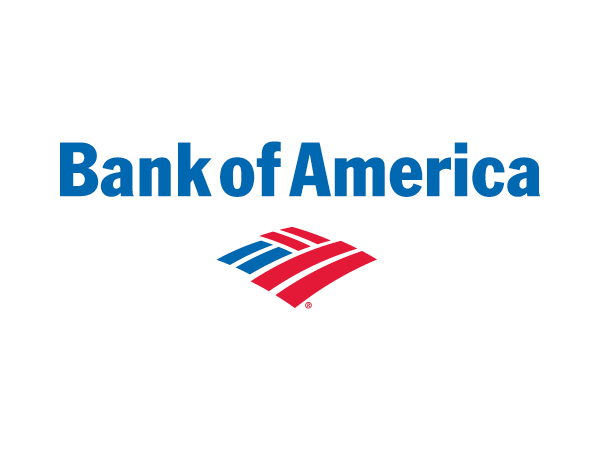
- Account Balance: The amount of money in a bank account, including both deposits and withdrawals.
- ATM (Automated Teller Machine): A self-service machine that allows customers to perform various banking transactions, such as withdrawing cash, depositing money, and checking their account balance, using a bank card or debit card.
- Overdraft: When the balance in a bank account goes below zero, allowing the account holder to withdraw more money than they have available. Overdrafts may incur fees or interest charges.
- Direct Deposit: The electronic transfer of funds directly into a bank account. Common uses of direct deposit include salary payments, government benefits, and tax refunds.
- Interest: The fee charged by a lender or earned by a depositor for the use of borrowed money or for keeping money in a bank account. Lenders charge interest on loans, while banks pay interest to customers for keeping deposits.
- Credit Score: A numerical value that represents a person’s creditworthiness. Credit scores are based on various factors such as credit history, repayment behavior, and outstanding debts. Lenders use credit scores to assess the risk of lending money to individuals.
- APR (Annual Percentage Rate): The annualized interest rate that includes both the interest charged on a loan or credit card and any additional fees. APR helps borrowers compare the costs of different loan or credit card offers.
- Collateral: An asset that a borrower pledges to a lender as security for a loan. If the borrower fails to repay the loan, the lender can take possession of the collateral to recover the outstanding debt.
- EFT (Electronic Funds Transfer): The electronic transfer of money from one bank account to another. EFTs are commonly used for various transactions, such as paying bills, making online purchases, and transferring funds between accounts.
- FDIC (Federal Deposit Insurance Corporation): A U.S. government agency that insures bank deposits up to a certain limit ($250,000 per depositor per bank). The FDIC provides depositors with confidence that their funds are protected even if the bank fails.
These are just a few examples of banking terms. The banking industry has a wide range of terminology, so if you have specific terms in mind, feel free to ask for explanations.
बैंकिंग शब्दावली
खाता शेष: जमा और निकासी दोनों सहित बैंक खाते में धन की राशि। एटीएम (स्वचालित टेलर मशीन): एक स्व-सेवा मशीन जो ग्राहकों को बैंक कार्ड या डेबिट कार्ड का उपयोग करके विभिन्न बैंकिंग लेनदेन करने की अनुमति देती है, जैसे नकदी निकालना, पैसा जमा करना और अपने खाते की शेष राशि की जांच करना। ओवरड्राफ्ट: जब बैंक खाते में शेष राशि शून्य से नीचे चली जाती है, तो खाताधारक को उपलब्ध राशि से अधिक पैसे निकालने की अनुमति मिलती है। ओवरड्राफ्ट में शुल्क या ब्याज शुल्क लग सकते हैं। डायरेक्ट डिपॉजिट: सीधे बैंक खाते में धन का इलेक्ट्रॉनिक हस्तांतरण। प्रत्यक्ष जमा के सामान्य उपयोगों में वेतन भुगतान, सरकारी लाभ और टैक्स रिफंड शामिल हैं। ब्याज: एक ऋणदाता द्वारा लिया गया शुल्क या जमाकर्ता द्वारा उधार ली गई धनराशि के उपयोग के लिए या बैंक खाते में धन रखने के लिए अर्जित किया गया शुल्क। ऋणदाता ऋण पर ब्याज लेते हैं, जबकि बैंक जमा रखने के लिए ग्राहकों को ब्याज देते हैं। क्रेडिट स्कोर: एक संख्यात्मक मान जो किसी व्यक्ति की साख का प्रतिनिधित्व करता है। क्रेडिट स्कोर विभिन्न कारकों पर आधारित होते हैं जैसे क्रेडिट इतिहास, पुनर्भुगतान व्यवहार और बकाया ऋण। ऋणदाता व्यक्तियों को धन उधार देने के जोखिम का आकलन करने के लिए क्रेडिट स्कोर का उपयोग करते हैं। एपीआर (वार्षिक प्रतिशत दर): वार्षिक ब्याज दर जिसमें ऋण या क्रेडिट कार्ड पर लगाया गया ब्याज और कोई अतिरिक्त शुल्क दोनों शामिल हैं। एपीआर उधारकर्ताओं को विभिन्न ऋण या क्रेडिट कार्ड ऑफ़र की लागतों की तुलना करने में मदद करता है। संपार्श्विक: एक संपत्ति जो एक उधारकर्ता ऋण के लिए सुरक्षा के रूप में एक ऋणदाता को गिरवी रखता है। यदि उधारकर्ता ऋण चुकाने में विफल रहता है, तो ऋणदाता बकाया ऋण की वसूली के लिए संपार्श्विक को अपने कब्जे में ले सकता है। EFT (इलेक्ट्रॉनिक फंड ट्रांसफर): एक बैंक खाते से दूसरे बैंक खाते में पैसे का इलेक्ट्रॉनिक ट्रांसफर। ईएफ़टी का उपयोग आमतौर पर विभिन्न लेन-देन के लिए किया जाता है, जैसे बिलों का भुगतान करना, ऑनलाइन खरीदारी करना और खातों के बीच धनराशि स्थानांतरित करना। FDIC (फेडरल डिपॉजिट इंश्योरेंस कॉर्पोरेशन): एक यू.एस. सरकारी एजेंसी जो एक निश्चित सीमा ($250,000 प्रति जमाकर्ता प्रति बैंक) तक बैंक जमा का बीमा करती है। FDIC जमाकर्ताओं को विश्वास दिलाता है कि बैंक विफल होने पर भी उनके फंड सुरक्षित हैं। ये बैंकिंग शर्तों के कुछ उदाहरण हैं। बैंकिंग उद्योग में शब्दावली की एक विस्तृत श्रृंखला है, इसलिए यदि आपके मन में विशिष्ट शर्तें हैं, तो बेझिझक स्पष्टीकरण मांगें।




